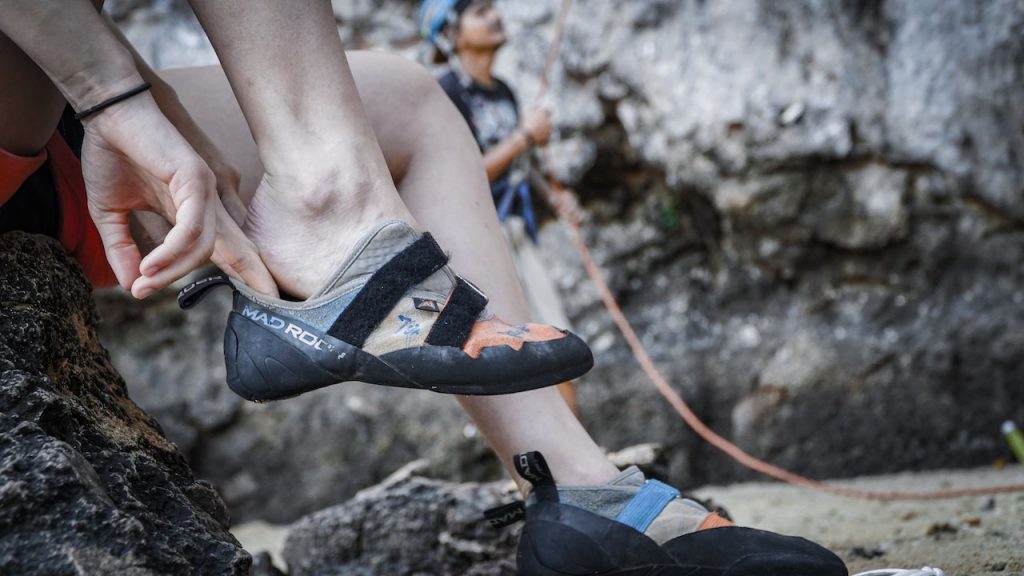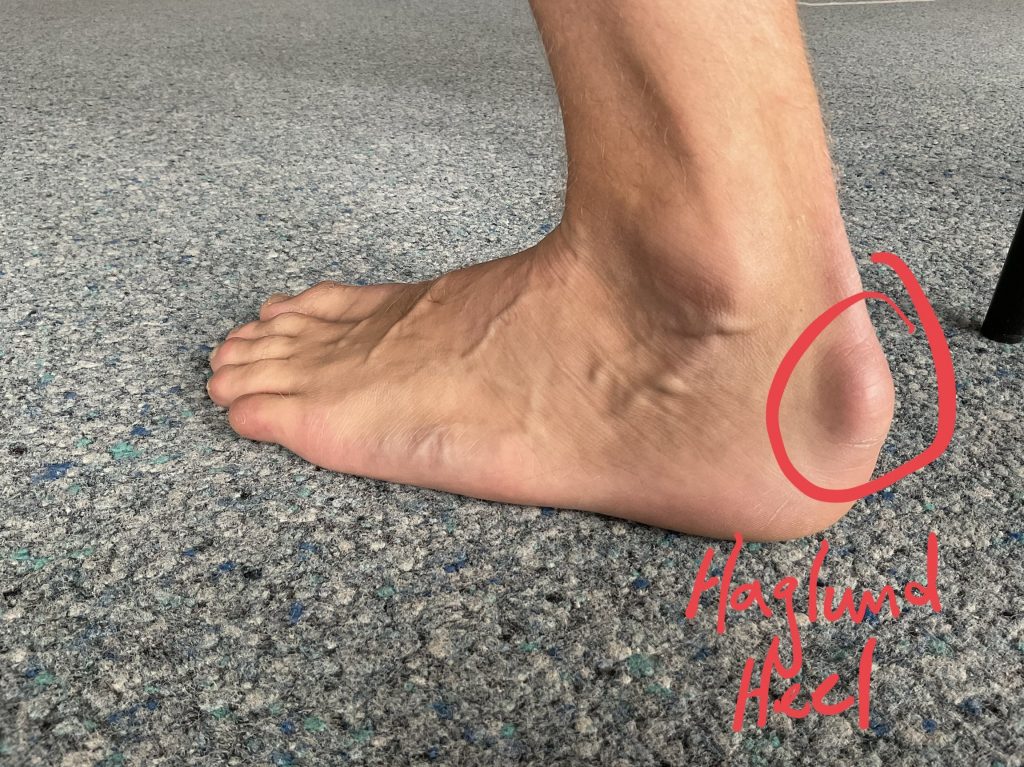The smaller your rock climbing shoes are, the better right? This will increase your friction on the wall and help you stand on smaller footholds. Furthermore, they should hurt a lot and preferably make you cry.
Or shouldn’t they?
Let’s break the myth of “smaller is better” right now; the myth is exactly that: a myth. But like with every myth there’s a truth somewhere.
How rock climbing shoes should fit depends on your feet and the type of rock or plastic you climb with them. And I believe that you can find a shoe that works both for your feet and the type of climbing you want to do.
That’s why in this article I’ll discuss the different parts of the rock climbing shoe and how they should fit.
Are you ready?
Let’s dive right in.
1. Possible Injuries Due to Wearing the Wrong Rock Climbing Shoes
If you think grinding your teeth while wearing tiny rock climbing shoes is all there is to it, you might want to think again. Because wearing rock climbing shoes that don’t fit well can lead to a variety of injuries. Not all of them present themselves within the first months of use, some of them might even take years to develop.
Here’s an overview of the injuries you can develop in your feet. Obviously, it’s not that this will imminently happen when you wear small shoes, but I believe they’re worth considering.
- Hallux Valgus
- Haglund Heel
- Achilles Tendonopathy
- Plantar Fascitis
2. Analyzing Your Feet
Before you buy any rock climbing shoes, let’s start by having a look at your feet.
Yours might be thick, thin, high arched, low arched, flat, with or without a prominent heel, with uneven or even toe lengths. If you have been climbing for a while, you’re likely to have calluses on the top of your toes due to the pressing of climbing shoes there.
There are 4 areas of the foot you should pay attention to:
- The toes: how is the length of the toes relative to the others?
- The forefoot: how wide or thin is it?
- The arch: is it high or low?
- The heel: is it wide or thin? Does it protrude to the back? Are the Achilles connected higher up or lower?
Figuring out what your foot looks like will give you a clear indication of which form of shoes will fit better.
So, now you’re ready to hit the store to buy your climbing shoes. In the rest of this article, I’ll explain what to look for in rock climbing shoes relative to your feet.
3. How your Toes and Forefoot Should Fit in Rock Climbing Shoes
You want your toes to be flexed a bit so you can generate better tension, but not folded like the Chinese custom. You want functional feet inside your shoes not little lumps of skin and bone.
If the size of your toes is more equal a wider pointed shoe might be better than a smaller point. If you have a prominent big toe while the rest of the toes is being smaller, the opposite is true. With a wider forefoot, you want wider shoes, when your forefoot is thinner, a tighter shoe might be the way to go.
Turn your rock climbing shoe upside down and compare it to a couple of other pairs to get an idea of what is wide, what is tight, and what is pointy and what is not.
[photo of the front of rock climbing shoes
4. The Arch of Rock Climbing Shoes
The arch of rock climbing shoes dictates the “aggressiveness” of the foot. A stronger arch in the rock climbing shoe means a stronger arch in your foot. This results in more tension in the foot which helps to put more pressure on the toes.
If you climb on tiny foot holds and/or need to put a lot of pressure on your feet, a stronger arch might be helpful.
If your feet have a stronger arch you might slide easier into aggressive shoes. This doesn’t mean though that if your feet are flat that you won’t. Because flat feet can be due to a weakness of the foot muscles and don’t necessarily mean you can’t arch your feet.
I’m not sure how strong of an arch is necessary for it to be advantageous. If a little arch is enough already or if an arch only works when it’s really bent…
Finally, when it comes to arches, the midpart might have a sole or it might not in the case of rock climbing shoes which have 2 soles. 1 for the front of the foot, and 1 for the heel. The latter will stretch out more after use and can therefore be safely bought a bit smaller than single-sole shoes.

5. How Your Heel Should Fit in Your Rock Climbing Shoes
For me, the heel is a particular area of complication when it comes to rock climbing shoes. I have a Haglund Heel on the left side. This is a bonification of the place where the Achilles tendon inserts into the bone. When there’s too much pressure for too long it starts hurting a lot.

So, my message to you, pay particular interest to how the heel is cut out in your climbing shoe. La Sportiva, for example, is known to make shoes that fit tight all around the heel. In my case, that means more friction and more pain eventually. Furthermore, shoes, where the top edge of the heel comes more forward, can put friction on the Achilles tendon.
Your heel shouldn’t be anything close to loose though, because this will affect the friction of your heel hooks.
6. Important to Remember Before Buying a Rock Climbing Shoe
So, the bottom line of buying climbing shoes is this, start by analyzing your feet and only then go buy climbing shoes. Then, when you’re in the store try on as many as possible and consider which type of rock or plastic you want to climb and how much your shoe will stretch out. Look for a balance between comfort and performance.
